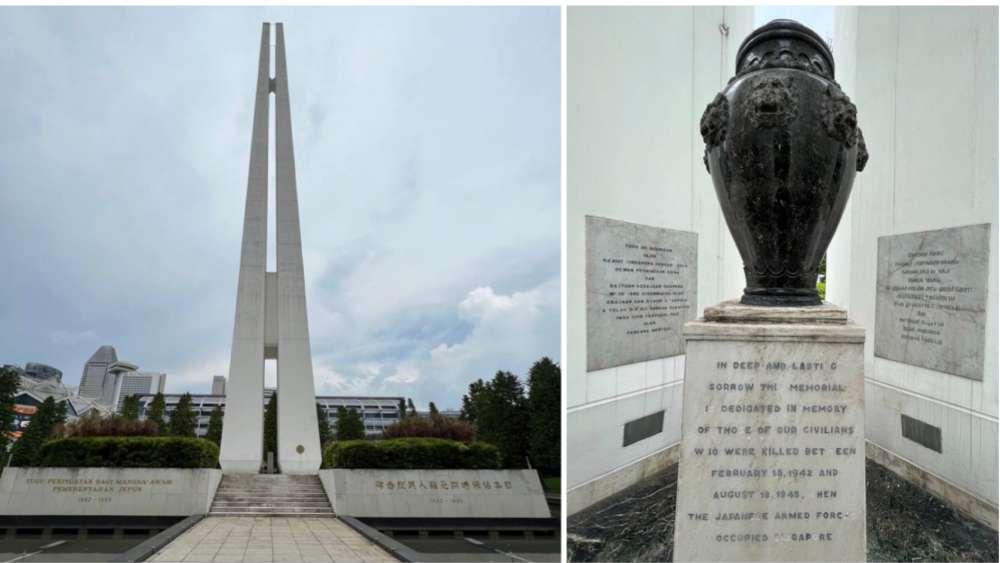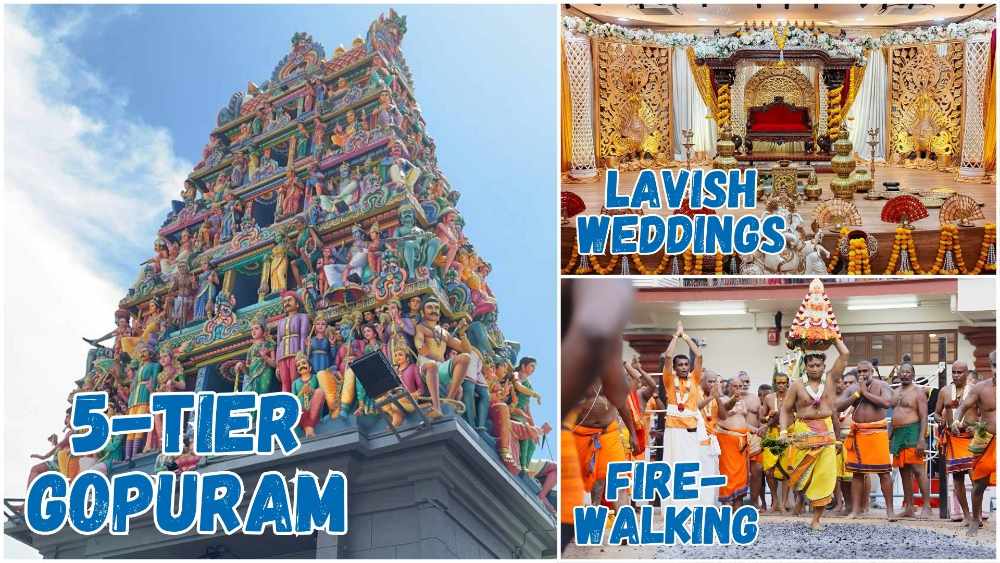Fire-Walking, Rifle-Bearing Sepoys, Vibrant Weddings – Singapore's Oldest Hindu Temple Has Seen It All
What is a National Monument? Who gazettes them? How many national monuments are there in Singapore? To date, the Preservation of Sites and Monuments, a division of National Heritage Board, has identified and gazetted 76 buildings, structures and sites of national significance as an integral part of Singapore’s built heritage.
And we're here to tell you all about them - one National Monument at a time!
You've probably passed by or stepped into more than a few of them without realising they were National Monuments: Al-Abrar Mosque, Asian Civilisations Museum, the Civilian War Memorial, Saint Andrew's Cathedral, the Esplanade Park Memorials, Fort Siloso on Sentosa - no need to plan an itinerary for friends visiting from overseas; just show them this article ✌️
In this edition, we take a look at the oldest and largest Hindu temple in Singapore, Sri Mariamman Temple.
📍 Location
Sri Mariamman Temple was the 6th building to be gazetted as a National Monument, and is located near other National Monuments such as Jamae Mosque, and Ying Fo Fui Kun. The MRT stations nearest to Sri Mariamman Temple are Chinatown or Telok Ayer.
📅 Significant dates
Dates built:
- 1827: Simple wood-and-attap temple
- 1843: Replaced by a brick structure
- 1862-63: Much of the present structure was constructed
Milestones:
- 1903: Original three-tiered gopuram (entrance tower)
- 1925: The gopuram was rebuilt into a five-tiered one
- 1960s: The existing gopuram was constructed
Date gazetted: 28 Jun 1973
📜 History
Just like Jamae Mosque, Sri Mariamman Temple is a long-standing landmark along South Bridge Road, right in the heart of Chinatown. Both National Monuments stand as enduring symbols of the once sizeable Tamil community that lived in the area, serving as lasting reminders of their vital role in shaping Singapore during the British colonial era.
Sri Mariamman Temple represents the enduring traditions and practices of Hinduism, while also paying tribute to the generosity and community spirit of the early Tamil settlers.
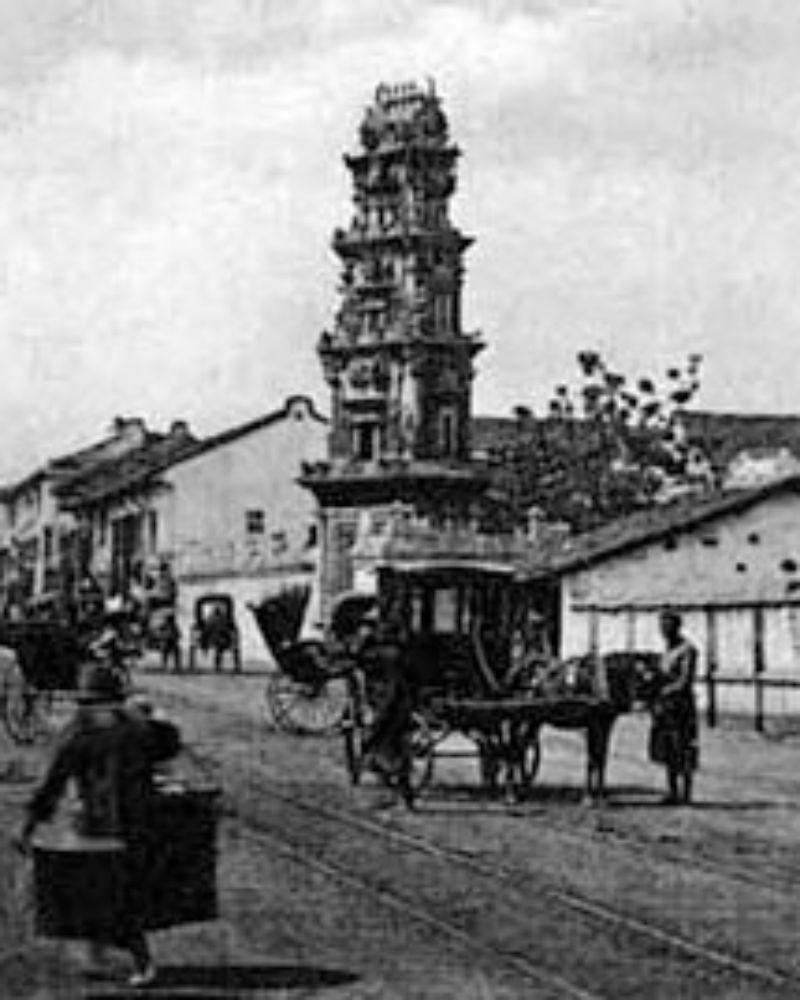
View of Sri Mariamman Temple circa 1900. | IMAGE: WIKIMEDIA COMMONS/@PHOTOGRAPHER OF G.R. LAMBERT & COMPANY
The temple was founded by Indian pioneer Naraina Pillai, who had worked as a government clerk in Penang. He accompanied Sir Stamford Raffles during Raffles’ second visit to Singapore in 1819.
At first, the British East India Company allocated a plot on Telok Ayer Street for a Hindu temple. However, this site was turned down by the Hindu community as it lacked a reliable source of fresh water, which was essential for religious rituals. Colonel William Farquhar, the Resident of Singapore, subsequently granted Naraina permission to build the temple near Freshwater Stream, now known as Stamford Canal.
The Town Planning Committee later decided that this site was unsuitable, as it had other plans for the area.
In 1823, the current site on South Bridge Road was officially reserved for the temple in Singapore’s first town plan, drawn up by Lieutenant Philip Jackson. A simple wooden and attap structure was completed there by 1827.
The temple’s principal deity, Sri Mariamman, is closely linked with rain and fertility (in Tamil, "maari" means rain, and "amman" denotes mother). She is also revered for her power to cure epidemic diseases such as cholera. Historically, the temple was known as the “Kling Temple”, reflecting the term "Kling" (sometimes spelled as Keling or Kelenga) then used to refer to southern Indians, particularly Tamils.
The temple compound was expanded in 1831 when Indian landowner Seshasalam Pillai donated part of his land to the temple, an act of kindness commemorated by a granite slab within the grounds. The oldest parts of the brick structure date to around 1843, and skilled craftsmen from India and China were involved in its construction.
In 1915, the architectural firm Swan and Maclaren, which also designed the Civilian War Memorial and the Cenotaph, was hired to build a new covered walkway linking the entrance tower to the main hall. This followed a fire in 1910 that destroyed the previous attap walkway.
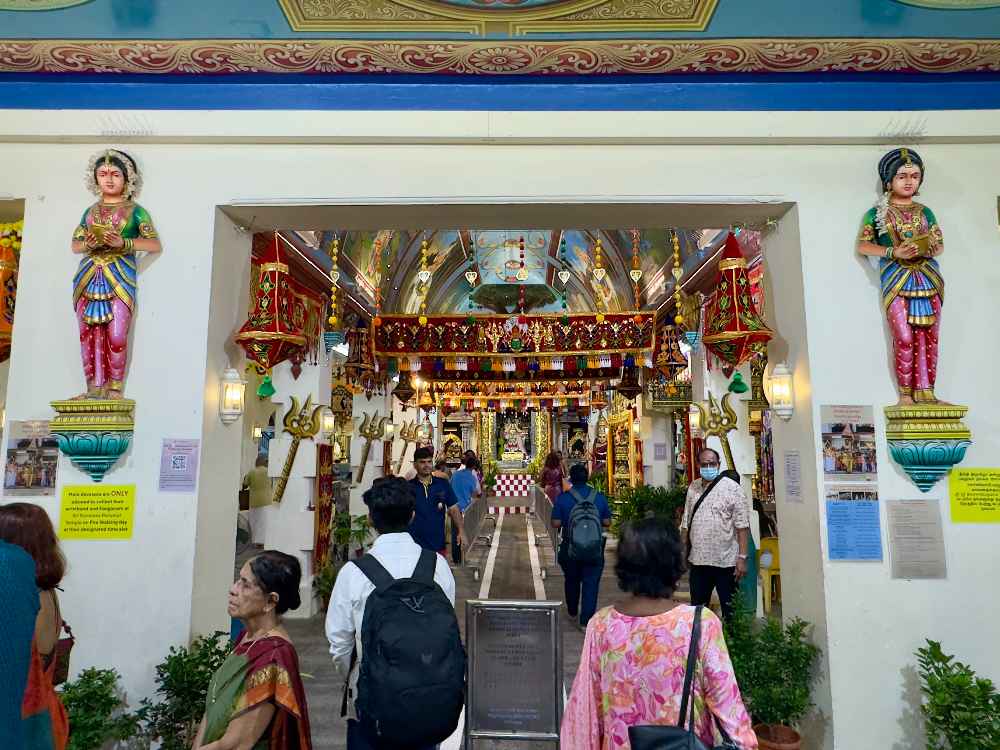 IMAGE: NG KAI
IMAGE: NG KAI
Beyond serving as a place of worship, Sri Mariamman Temple was once a refuge for newly arrived Indian immigrants who sought shelter before finding jobs and housing. Like many temples, it also functioned as a social hub where members of the community could gather. Hindu wedding ceremonies have long been conducted here and continue to this day.
The temple’s prominence even inspired the names of two nearby streets: Temple Street and Pagoda Street. The latter refers to the temple’s gopuram, the monumental entrance tower that Chinese residents thought resembled a pagoda.
Every year, Sri Mariamman Temple celebrates Theemithi, a festival dedicated to the goddess Draupadi. This tradition dates back to the temple’s earliest days. Theemithi usually takes place in October or November and commemorates an episode from the "Mahabharata" in which Draupadi proved her purity by walking barefoot across fire.
As part of the celebrations, devotees walk a 4km route from Sri Srinivasa Perumal Temple on Serangoon Road to Sri Mariamman Temple. The highlight is the fire-walking ceremony, during which male devotees cross a three-metre bed of glowing embers before stepping into a pit filled with milk to cool their feet.
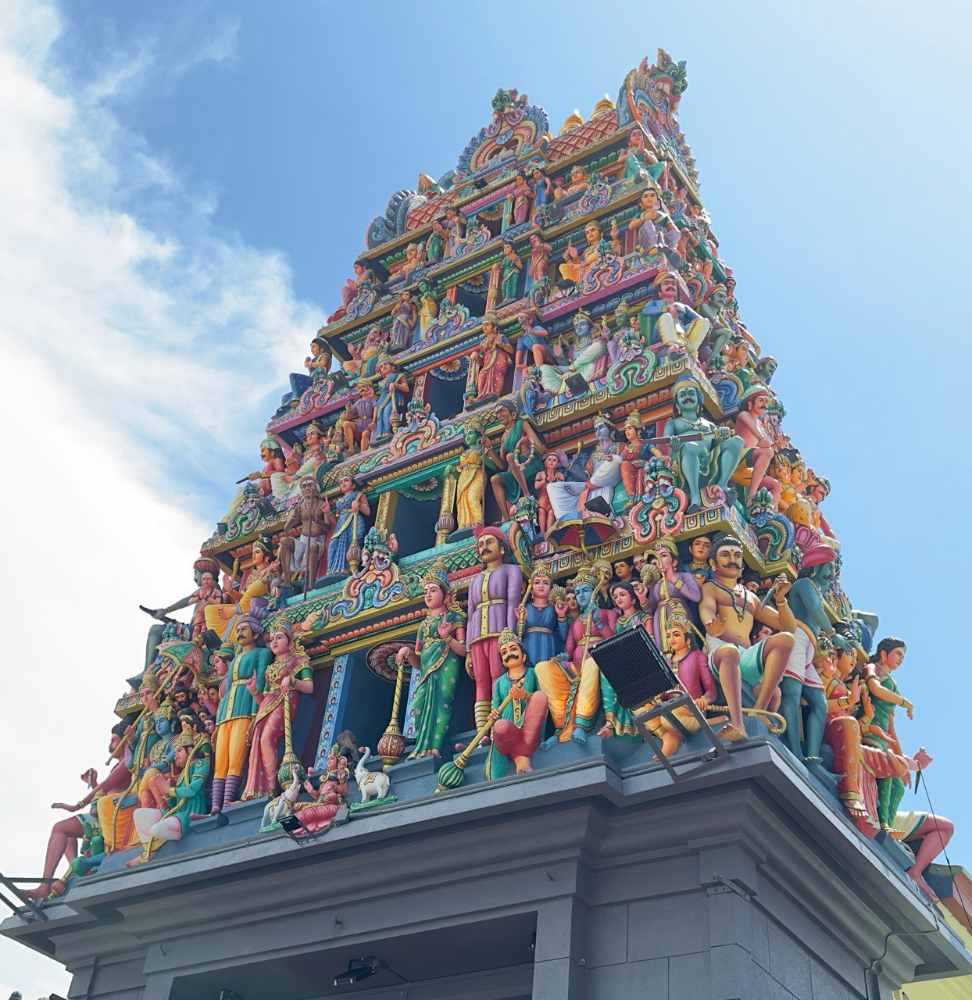 The present-day five-tiered gopuram showcases sculptures of Hindu deities, other figures and ornamental decorations. | IMAGE: NG KAI
The present-day five-tiered gopuram showcases sculptures of Hindu deities, other figures and ornamental decorations. | IMAGE: NG KAI
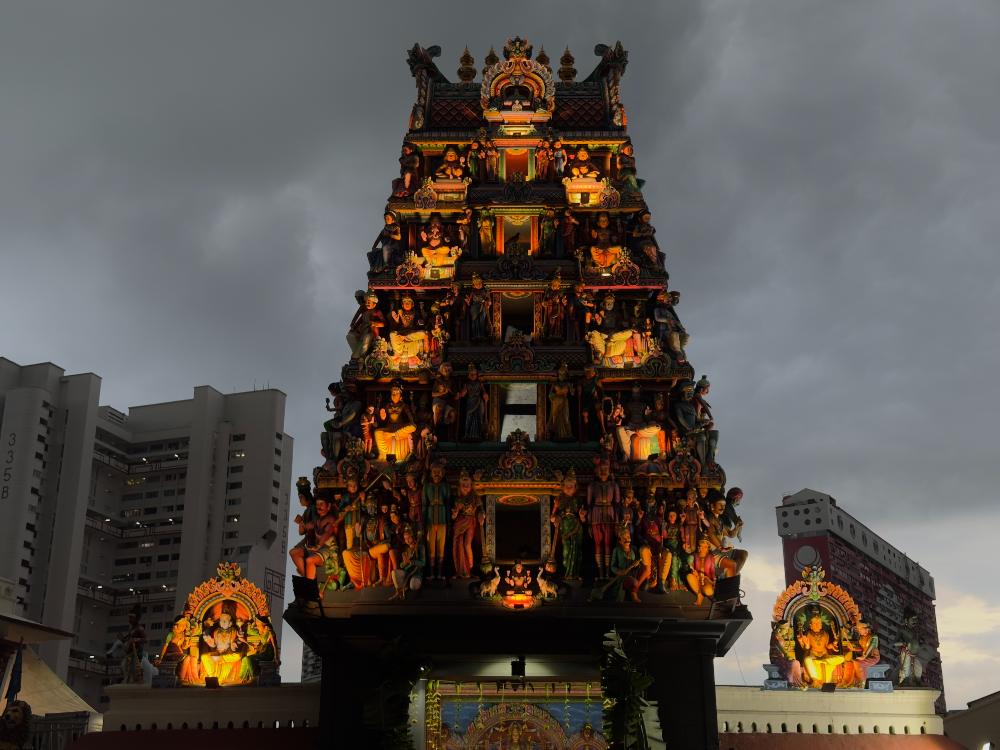 A nighttime view of the gopuram. | IMAGE: NG KAI
A nighttime view of the gopuram. | IMAGE: NG KAI
📐 Design and architecture
One of the temple’s most striking features, as with many South Indian temples, is its ornate gopuram. Among the colourful sculptures of Hindu deities and floral motifs, there were once figures of sepoys, or Indian soldiers of the British Raj, standing guard with rifles at the base of the tower. These were removed in 1971.
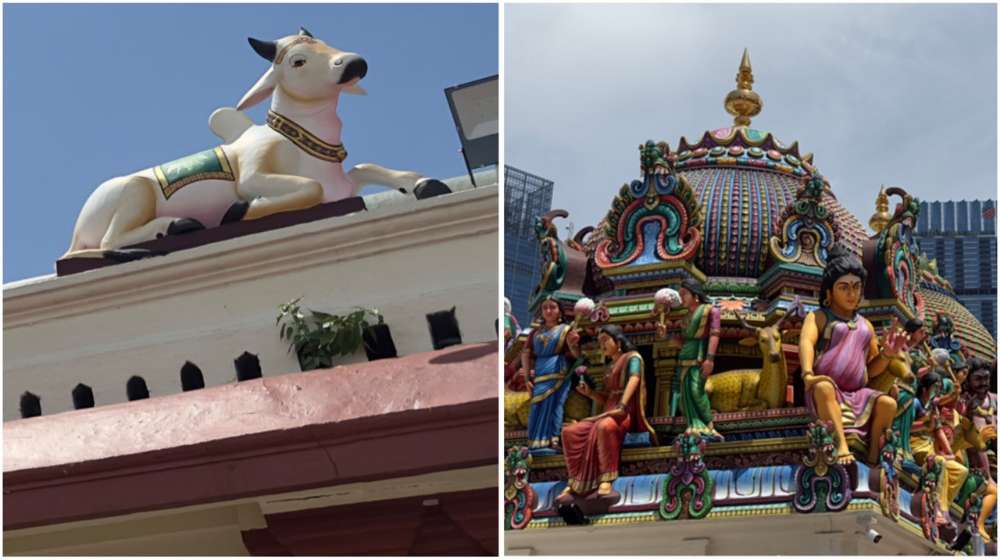 IMAGES: NG KAI
IMAGES: NG KAI
Within the temple compound are shrines topped with brightly coloured domes known as vimanam. Near the ablution area stands a flagpole where a flag is raised days before a major festival to signal preparations. Statues of cows, sacred in Hinduism, can also be seen along the temple’s boundary walls.
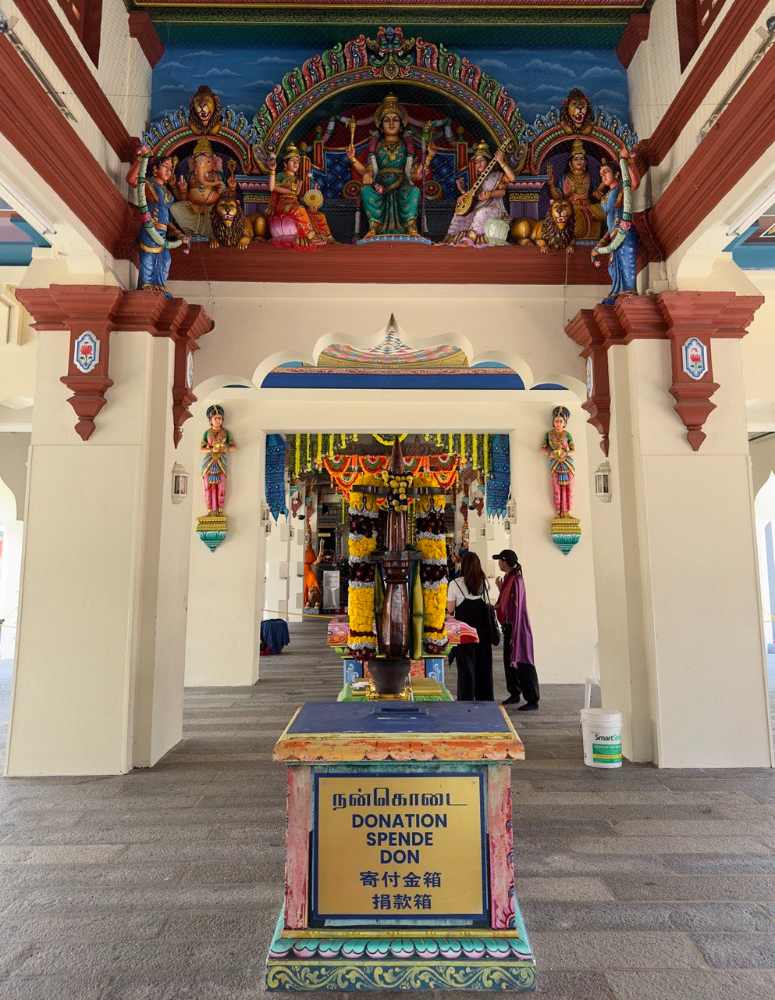
IMAGE: NG KAI
The mandapam, or main hall, features square pillars and an elongated nave adorned with intricate ceiling paintings. Some of these depict mandalas, sacred symbols representing the universe and enlightenment.
At the heart of the temple lies the inner sanctum, which houses a small statue of Sri Mariamman. The figure, first installed by Naraina Pillai, is usually veiled except during puja (religious services) and special festivals. The main shrine is flanked by smaller shrines dedicated to Draupadi, a prominent figure in the Hindu epic "Mahabharata", and to Rama, an incarnation of the Hindu diety Vishnu. Other deities worshipped here include Ganesha, the Elephant God, and Aravan, represented by a severed head and honoured as a self-sacrificing hero from the "Mahabharata".
In keeping with the Hindu custom of renewing temples every twelve years, Sri Mariamman Temple underwent its latest reconsecration in 2023. The year-long restoration carefully revived the temple’s original grandeur. Today, it remains one of Singapore’s most revered Hindu temples, welcoming both devotees and visitors from around the world.
🕖 Opening hours
Regular visiting hours are 6am to 12pm and 6pm to 9pm daily.
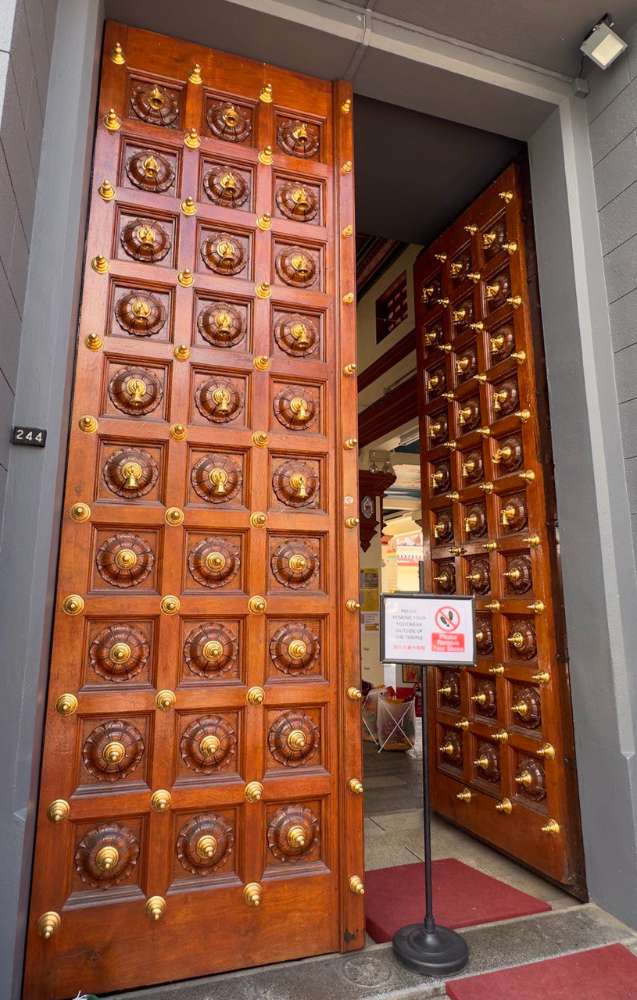
The doors are studded with small gold bells arranged in a grid; devotees are supposed to ring them as they move through the doors. | IMAGE: NG KAI
🎟️ Admission
Entry is free. However, do take note of the dress code when visiting Sri Mariamman Temple:
- Shoulders must be covered, and trousers or skirts must cover at least the knees.
- The temple does provide shawls, cover-ups and wraps.
- Avoid anything too tight, too short and too revealing.
- Footwear should be removed outside the temple; socks are allowed inside. There is a space outside the temple's entrance designated for footwear to be left safely.
For the latest updates on Wonderwall.sg, be sure to follow us on TikTok, Telegram, Instagram, and Facebook. If you have a story idea for us, email us at






